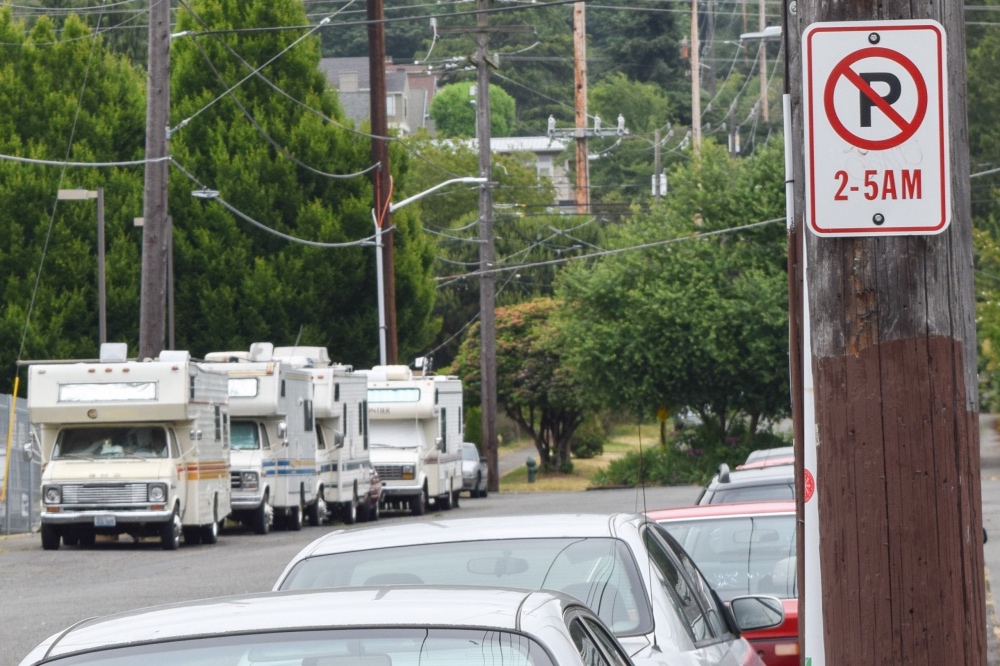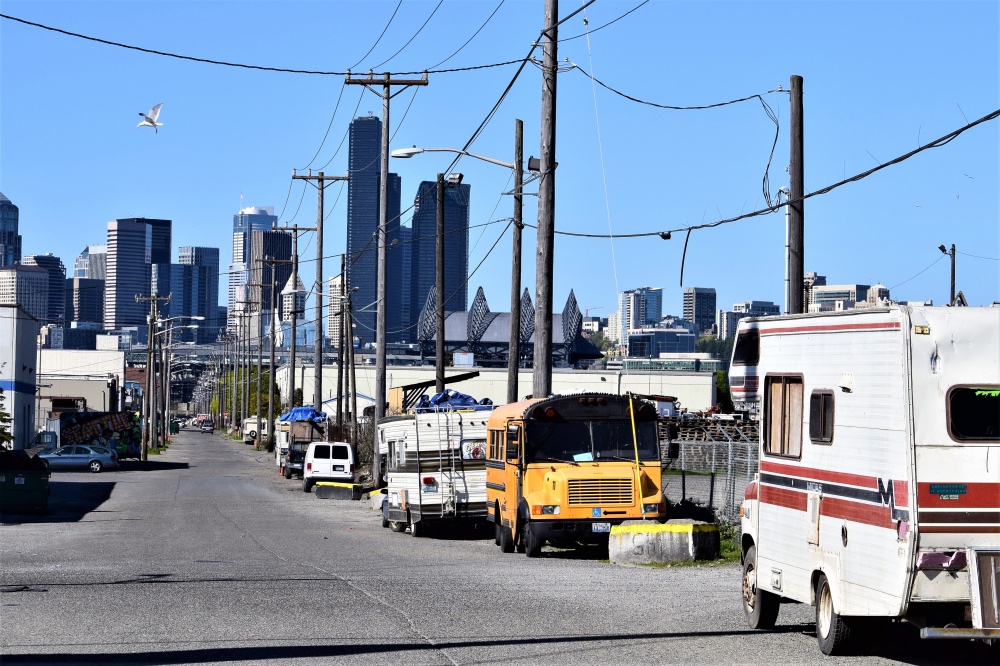
CAREY L BIRON, of Thomson Reuters Foundation, reports…
Washington DC, US
Thomson Reuters Foundation
Judith Ortiz was living in an apartment near San Francisco, working in a restaurant, when she realized she could no longer make ends meet.
Rents had gotten too high, she recalled, and the job was not paying enough.
About a year ago, she took a step that experts say is increasingly common amid the record rental affordability crisis gripping the United States: She left her apartment and bought an RV, a large vehicle equipped with beds, plumbing and a small living space.
Today Ortiz lives in the RV – short for recreational vehicle and designed for camping or road trips – with her sister and two-year-old niece.
The arrangement allows her “to be in the neighborhood and not stay on the street”, said Ortiz, 45.
But it is hopefully only a temporary solution, she said, adding that living in an RV in the street was unsafe and that her sister had been hassled.
“Nobody wants to live in an RV. It’s just convenient because the cost of living is way too high,” she told the Thomson Reuters Foundation by phone from East Palo Alto, California.

A sign in Seattle restricts overnight parking in 2014. PICTURE: Handout by Graham Pruss
A dramatic rise in homelessness in the United States after the recession of 2008-09 has been running parallel to an increase in people living in vehicles, said Graham Pruss, a University of Washington anthropologist.
Those living in oversize vehicles make up a unique subset, he said: “RVs are being used as a new form of affordable housing.”
“Nobody wants to live in an RV. It’s just convenient because the cost of living is way too high.”
– Judith Ortiz
In places like Seattle, the booming tech industry has made it difficult for those with lower-paid jobs to find a place to live.
“People who work in the service economy can’t live here,” said Pruss, who works with the city of Seattle on homelessness issues. “They have to live 100 miles away – or they’re using these vehicles.”
Especially for those who are newly experiencing homelessness, an RV can be enticing, Pruss said.
They “look around them on the street and see everyone else living in tents, and there’s a valuation, seeing [a] vehicle as better,” he said. “Especially an RV, which has a stove – you have mobility, a certain property right, privacy.”
The number of those living in vehicles has skyrocketed over the past decade, Pruss said – in Seattle, rising within a decade to 3,372 from 881 in 2008, according to official annual counts.
And the anecdotal evidence is clear, he said: RVs have become an incredibly common sight on the streets of many US cities, particularly on the West Coast.
Yet RVs as a housing option pose unique challenges for cities, support services and residents alike, said researchers and activists.
Their size – often more than 20 feet long, and wider than a standard vehicle – makes it difficult to find parking. RVs also often have toilets or sinks, meaning residents have to figure out a way to safely dispose of wastewater, while generators can be noisy.
These factors also make them easy targets for residential neighborhoods that may not want them on their streets, and for cities to crack down on them.
Ordinances to outlaw sleeping in a vehicle rose by 213 per cent in 2019, according to a report from the National Law Center on Homelessness and Poverty. Such bans now exist in 50 per cent of US cities, the report said.

RVs and other oversize vehicles on a street in Seattle in 2014. PICTURE: Handout photo by Graham Pruss.
RV residents can also pose an additional complexity as they may not want to move out of their vehicle, said Jennifer Adams, an outreach manager with the Bridge Care Center, a charity in Seattle.
Instead, they may see themselves as having made a purposeful decision to downsize, and thus may not want to access homelessness services that could be of help, she explained.
“A lot of them are a lot more independent – it costs a lot more money to be that way, and they usually have an income,” said Adams, referring to those living in RVs.
The city’s tech industry has displaced roofers, painters, fishermen and other contractors, she said, and those are the types that may consider moving into an RV to save costs.
Adams herself lived in a variety of vehicles from 2008 to 2013, at times renting an RV from someone else, an increasingly common business, she said.
It was difficult being forced to move the vehicle constantly, Adams added, and at one point residents of the neighborhood that she was parking in started to attack people living in RVs.
But the experience wasn’t all negative.
“I have tons of pictures of all of the wildlife from that time – raccoons, ducks and bunnies. It was peaceful,” she said.
Beyond outlawing or heavily regulating RVs, many cities have yet to find a strategy for dealing with this new style of housing.
“People were afraid – a lot of it was about their children not being able to stay in the school district. Many had grown up in that community and felt they were being driven out.”
– Alicia Garcia, who works on homelessness issues in the San Francisco Bay area, speaking about why authorities were looking at new laws to force RVs out of neighbourhoods.
Even “safe parking” programs, a rising phenomenon in which church or municipal parking lots are opened to those sleeping in their vehicles at night, typically have not allowed RVs, if only because of their size, said Alicia Garcia, who works on homelessness issues in the San Francisco Bay area.
Last May, one of the first to focus solely on this community opened up in East Palo Alto, overseen by Garcia’s charity Project We Hope.
Parts of the city had become overrun with RVs, she recalled, and authorities had started contemplating new laws that would force them out.
“People were afraid – a lot of it was about their children not being able to stay in the school district. Many had grown up in that community and felt they were being driven out,” Garcia said.
Instead, negotiations eventually led Project We Hope to use a municipal lot for an overnight parking programme that can fit up to 20 RVs at a time and provides security, mobile showers and laundry facilities.
RV residents are also given vouchers to dump their wastewater at a nearby facility. The lot is only open overnight, and vehicles have to be insured and operational so they can move out each morning.
When they began, they received applications for 52 RVs, Garcia said – including Judith Ortiz and her sister. Since May, 15 of those families have moved into housing, and a few others have moved out of the city, with 26 now left in the programme.
Organisers are now in talks to extend the one-year pilot programme, and Garcia is working with several other cities to set up similar projects.
Still, she emphasises the parking programme needs to be seen only as a temporary measure.
“The city feels it was very successful, and we do too. But we would like to see all the people get housed – and not have to move on out of the city.”





